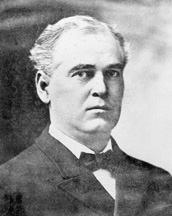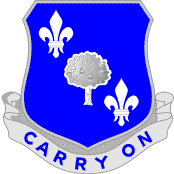
The Texas Revolution was a rebellion of colonists from the United States and Tejanos in putting up armed resistance to the centralist government of Mexico. Although the uprising was part of a larger one, the Mexican Federalist War, that included other provinces opposed to the regime of President Antonio López de Santa Anna, the Mexican government believed the United States had instigated the Texas insurrection with the goal of annexation. The Mexican Congress passed the Tornel Decree, declaring that any foreigners fighting against Mexican troops "will be deemed pirates and dealt with as such, being citizens of no nation presently at war with the Republic and fighting under no recognized flag". Only the province of Texas succeeded in breaking with Mexico, establishing the Republic of Texas. It was eventually annexed by the United States.

Tenaha is a town in Shelby County, Texas, United States. The population was 989 at the 2020 census.

Charles Allen Culberson was an American political figure and Democrat who served as the 21st Governor of Texas from 1895 to 1899, and as a United States senator from Texas from 1899 to 1923.

Coke Robert Stevenson was an American politician who served as the 35th governor of Texas from 1941 to 1947. He was the first Texan politician to hold its three highest offices, as well as the only one to do so in the 20th century. In 1966, Recorded Texas Historic Landmark marker number 5118, honoring Stevenson, was placed on the Kimble County Courthouse grounds in Junction, Texas.
Vinson & Elkins LLP is an international law firm with approximately 700 lawyers worldwide headquartered in Downtown Houston, Texas.

Earle Bradford Mayfield was a Texas lawyer who, from 1907 to 1913, was a Texas State Senator. In 1922, he was elected to the U.S. Senate as a Democrat. He was the first U.S. Senator to be widely considered by the voters to be a member of the revived Ku Klux Klan in the 1920s. Mayfield quietly accepted KKK support but never said he had joined. He was defeated for reelection in 1928 when his opponent attacked his links to the KKK.
James Anderson Elkins Sr. was a lawyer and banker in Houston, Texas. He co-founded the law firm, Vinson & Elkins.
The Suite 8F Group, also referred to as the 8F Crowd, was a network of politically active businessmen in Texas from the 1930s into the 1960s. "Suite 8F" refers to Herman Brown's Suite at the Lamar Hotel (demolished) in Houston. Herman Brown, one of the co-founders of the construction firm Brown and Root, made his primary home in Austin until 1948. With the company headquarters in Houston, Brown typically traveled from Austin once per week, then stayed at his room at the Lamar for a few days. Yet other members of his family stayed there as well. In addition, Gus Wortham, another member of the group, lived in the room next door, 7F. Jesse H. Jones, the developer and owner of the Lamar Hotel, lived on its top floor and was also a member of the group.

Leon Springs is an unincorporated community in Bexar County, Texas, now partially within the city limits of San Antonio. According to the Handbook of Texas, the community had a population of 137 in 2000. It is located within the San Antonio Metropolitan Area.
Ross N. Sterling was a United States district judge of the United States District Court for the Southern District of Texas.

The 1948 United States Senate election in Texas was held on November 2, 1948. After the inconclusive Democratic Party primary in July, a hotly contested runoff was held in August in which U.S. Congressman Lyndon B. Johnson was officially declared to have defeated former Texas governor Coke Stevenson for the party's nomination by eighty-seven votes. The state party's executive committee subsequently confirmed Johnson's nomination by a margin of one vote. The validity of the runoff result was challenged before the U.S. Supreme Court due to allegations of irregularities, and in later years, testimony by the parties involved indicated that widespread fraud occurred and that friendly political machines produced the votes needed for Johnson to defeat Stevenson. After years of desultory opposition to Democrats during the post-Reconstruction years of the Solid South, Republicans vigorously contested the general election by nominating businessman and party activist Jack Porter, who waged an aggressive campaign. Johnson won his first term in the Senate, but by a closer margin than usual for Texas Democrats.
Carol Eggert Dinkins is an American attorney. Under President Ronald Reagan, Dinkins served as the Assistant Attorney General of the Land and Natural Resources Division at the Department of Justice, and later the 20th United States Deputy Attorney General. Under President George W. Bush, Dinkins chaired the Privacy and Civil Liberties Oversight Board.

The 1922 United States Senate election in Texas was held on November 7, 1922. Incumbent Democratic U.S. Senator Charles Culberson ran for re-election to a fifth term, but lost the Democratic primary. A runoff between former Governor Pa Ferguson and Railroads Commissioner Earle Bradford Mayfield.

Homa Jackson Porter, usually known as H. J. Porter or Jack Porter was a Texas businessman and political activist. A key figure in building a competitive Republican Party in his home state after a century of Democratic dominance, Porter was best known as Lyndon Johnson's general election opponent in the 1948 contest for a seat in the United States Senate.

Edward Albert Kreger was an American lawyer and career officer in the United States Army. A veteran of the Spanish–American War, Philippine–American War, and World War I, he was most notable for his service as Acting Judge Advocate General of the American Expeditionary Forces during the First World War and Judge Advocate General of the United States Army from 1928 to 1931.

Bruce Magruder was a career officer in the United States Army. A veteran of the Moro Rebellion, Pancho Villa Expedition, World War I, and World War II, he attained the rank of major general. Magruder was most notable as the first commander of the 1st Armored Division and commander of the Infantry Replacement Center at Camp Wolters, Texas during World War II.

Halley Grey Maddox was a career officer in the United States Army. A 1920 graduate of the United States Military Academy, he was originally assigned to the Infantry branch and later transferred to Cavalry. A noted horseman, he took part in numerous equestrian shows as a member of U.S. Army teams and was also a member of numerous Army polo teams during the height of the sport's popularity in the 1920s.

Andrew Moses was a career officer in the United States Army. A graduate of the United States Military Academy, he served from 1897 to 1938, and was a veteran of the Spanish–American War and World War I. He attained the rank of major general and was most notable for his service as commander of 156th Field Artillery Brigade, 81st Division during the First World War, the Hawaiian Division and Schofield Barracks from 1936 to July 30, 1937, and the Hawaiian Department from 1937 to 1938.

The 359th Infantry Regiment is a unit of the United States Army. It was active in Europe as part of the 90th Infantry Division during World War I and World War II, and components of the regiment were later part of the United States Army Reserve.















